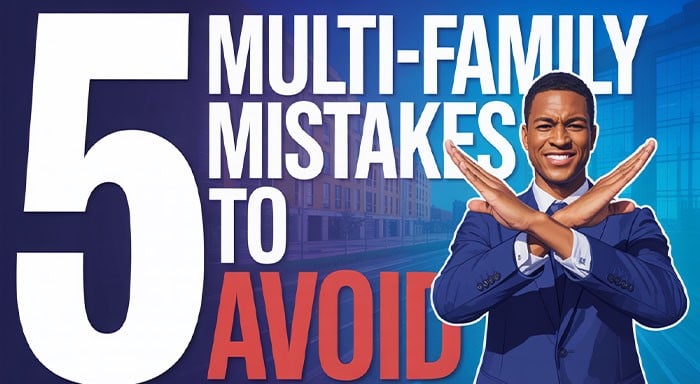Sometimes the biggest issues in your marketing aren’t loud or obvious. They show up quietly in low engagement, poor leads, or higher vacancy rates. And if you’re not paying close attention, they can keep draining your budget and your time.
The challenge in multifamily marketing isn’t just getting attention. It’s getting attention from the right people, at the right time, and turning that into signed leases. That takes more than just ads and a pretty site. It takes clarity, consistency, and a better understanding of what not to do.
This article lays out the top five marketing mistakes many properties make without realizing it and how you can steer clear of them.
1. Treating Every Property the Same
It’s easy to fall into the routine of copy-pasting marketing tactics from one property to another. However, what works for a downtown high-rise won’t necessarily suit a quiet suburban complex.
Every community has its own character, which means your marketing should reflect that uniqueness. If your messaging is too generic, it won’t resonate. Prospective renters are looking for something that feels tailored to their lifestyle. Families, young professionals, and retirees all value different things. Your ads, photos, and even your social media tone should match the kind of residents you're trying to attract.
Therefore, take the time to dig into what makes your property special. Highlight those features in a real and meaningful way. That means going beyond surface-level amenities and telling stories that matter to the people you're trying to reach.
2. Ignoring the Value of Local SEO
It’s tempting to focus all your energy on glossy brochures or Instagram posts. Still, if you’re not showing up when someone types “apartments near me,” you’re missing real leads. Search engines play a huge role in where renters end up.
That is exactly why local SEO matters more than most people think. You need to be visible exactly when and where people are searching. Some property owners who have worked with companies like Premier Online Marketing have shared that the difference in results was clear. They felt understood, and the strategies were based on real business needs. Not just a generic plan copied from somewhere else.
When you partner with people who take the time to understand your property and the kind of renters you're targeting, the outcomes are better. It’s not about flashy ads. It’s about being in the right place at the right time with the right message.
3. Neglecting Mobile Experience
Your website might look great on a desktop. However, if it's hard to use on a phone, you're already behind. Most renters start their search on mobile. If they’re pinching and zooming just to see your floor plans or if your virtual tours won’t load, they’ll move on fast.
Mobile usability affects everything from how people find your site to whether they choose to contact you. Make sure your pages load quickly, navigation is simple, and contact forms actually work on a phone.
This isn’t about being fancy. Instead, it’s about making it easy for someone to say yes to you. If they’re struggling to get basic info, they’re not going to bother with a tour.
4. Relying Too Heavily on Paid Ads Without Strategy
Paid ads can bring in traffic quickly. However, they also burn cash fast when there’s no clear direction behind them. Too many multifamily marketers run broad, untargeted campaigns hoping for results. The problem? You attract the wrong audience, waste money, and still struggle to fill units.
Effective advertising starts with knowing your renter profile. Where do they spend time online? What are they actually searching for? Instead of boosting random posts or running vague Google ads, create campaigns that speak directly to your ideal tenant. Use real data to shape your message, not just a hunch.
Monitor what’s working. Make changes to what’s not. Paid ads should feel like a tool that supports your strategy, not something you rely on blindly.
5. Overlooking CRM and Follow-Up Tools
You’ve captured the lead. That’s great. But what happens next often makes the difference between a signed lease and a missed opportunity. Without a clear follow-up process, even strong leads can fall through the cracks. Renters compare options and expect quick, helpful responses. If they do not hear back or receive generic replies, they will move on.
This is where tools like CRM systems become essential. A CRM, or Customer Relationship Management system, helps track every inquiry, automate reminders, organize conversations, and ensure that no lead is forgotten. It brings structure and consistency to your follow-up, which helps build trust and improve conversion rates.
It is not just about replying fast. It is about replying with purpose, clarity, and a personal touch. A good CRM makes that easier.
Closing Thoughts
Multifamily marketing doesn’t have to be overly complicated. It just needs to be focused. The key is knowing what to prioritize and doing it with consistency and care. When your efforts are intentional, your results start to feel more natural. And that’s when your property becomes the kind of place people want to live in, not just tour.



